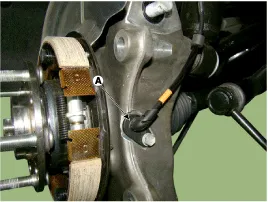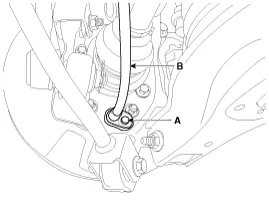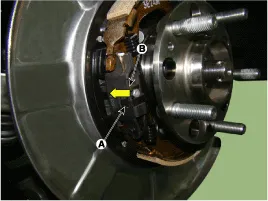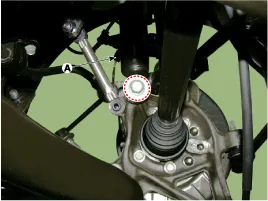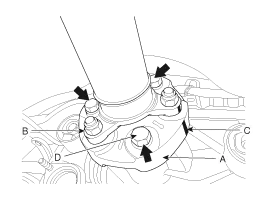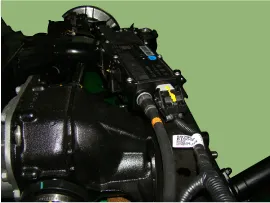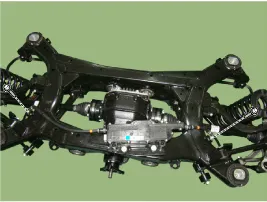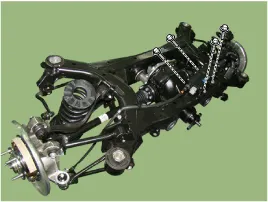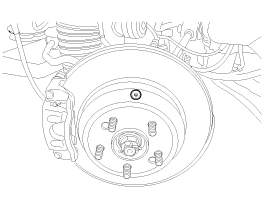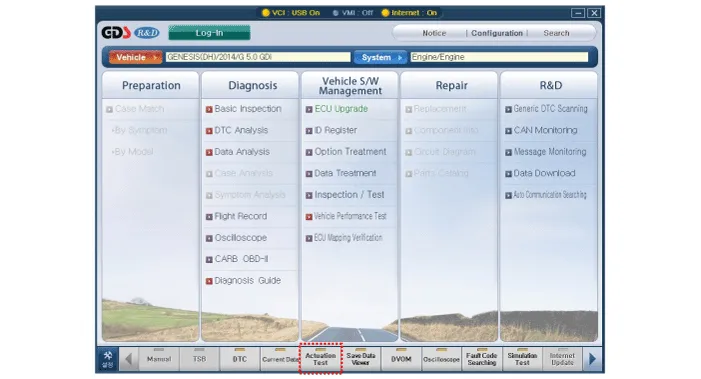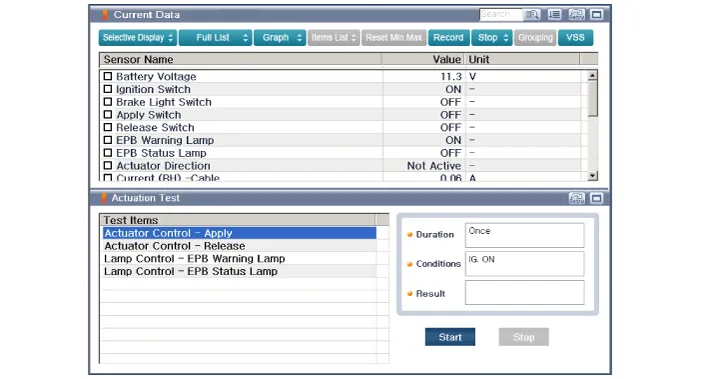Hyundai Genesis (DH): Parking Brake System / Electric Parking Brake (EPB) Repair procedures
| Removal |
| 1. |
Raise the vehicle, and make sure it is securely supported. |
| 2. |
Remove the rear tire and wheel.
|
| 3. |
Remove the rear disc brake.
(Refer to Brake System - "Rear Disc Brake") |
| 4. |
Remove the wheel speed sensor (A) by loosening the mounting bolt.
|
| 5. |
Remove the parking brake cable (B).
|
| 6. |
Remove the shock absorber mounting bolt.
|
| 7. |
After making a match mark (C) on the rubber coupling (A) and
rear differential companion (B), remove the propeller shaft mounting
bolts (D).
|
| 8. |
Remove the rear cross member.
(Refer to Suspension System -"Rear Suspension System") |
| 9. |
Disconnect the EPB connector.
|
| 10. |
Separate the parking cable by loosening the bracket bolt.
|
| 11. |
Remove the EPB module.
|
| Installation |
| 1. |
Install in the reverse order of removal. |
| 2. |
Adjust the rear brake shoe clearance.
|
| 3. |
Check that the brake operates normally by pushing the EPB switch more than 3 times after installing the EPB module.
|
| Inspection |
| 1. |
Connect the GDS to the data link connector located underneath the dash panel. |
| 1. |
Perform the item selection and operation according to the instructions on the GDS screen.
|
Schematic Diagram 1. Circuit diagram 2. Connector terminal information TerminalDescriptionCurrent (m/A) MAXMIN1Battery (+)12.5-2Battery12.5-3Parking brake switch20-4---5---6Electric parking brake switch signal 41057Electric parking brake switch signal 31058C-CAN LOW30209---10---11IGN20512---13---14Electric parking brake switch signal 210515Electric parking brake switch signal 110516C-CAN HIGH302017Ground12.
Removal 1. Turn ignition switch off and disconnect the battery (-) cable from the battery 2. Remove the driver side crash pad side cover. (Refer to Body - "Crash Pad") 3.
Other information:
Hyundai Genesis (DH) 2013-2016 Service Manual: Specifications
S
Hyundai Genesis (DH) 2013-2016 Service Manual: Auto Light Sensor Repair procedures
Removal 1. Disconnect the negative (-) battery terminal. 2. Remove the photo & auto light sensor. (Refer to Windshield Wiper/Washer - "Rain Sensor") Installation 1. Install the auto light sensor. 2. Connect the negative (-) battery terminal.
Categories
- Manuals Home
- Hyundai Genesis Owners Manual
- Hyundai Genesis Service Manual
- Cylinder Head Assembly
- TPMS Receiver Description and Operation
- Brake System
- New on site
- Most important about car

